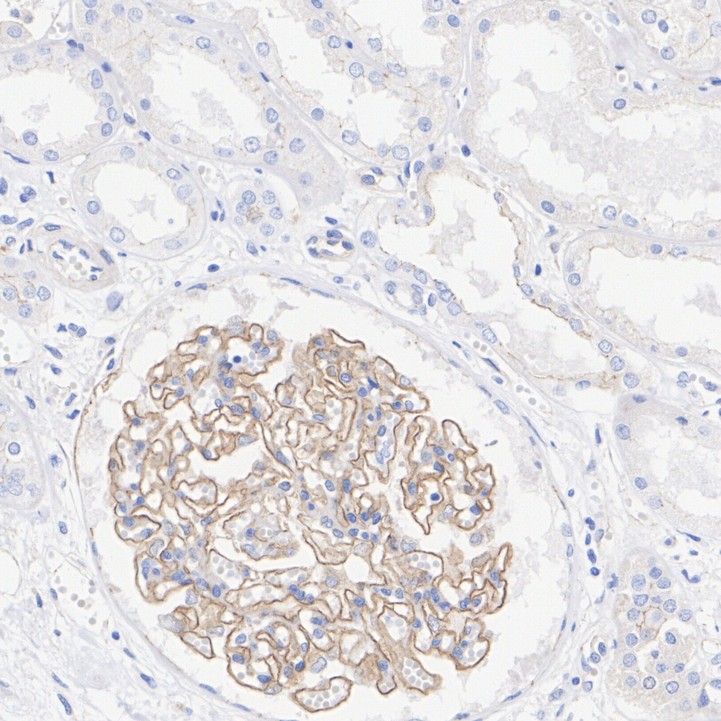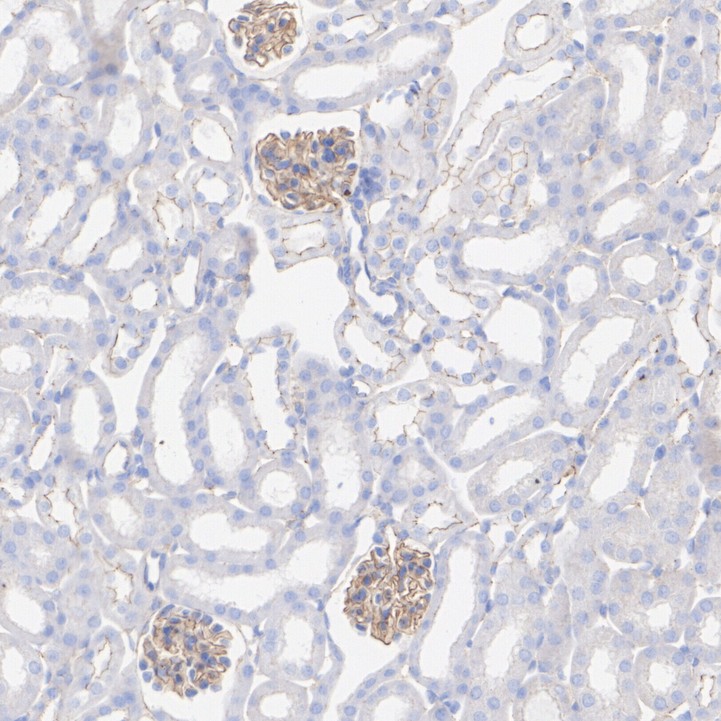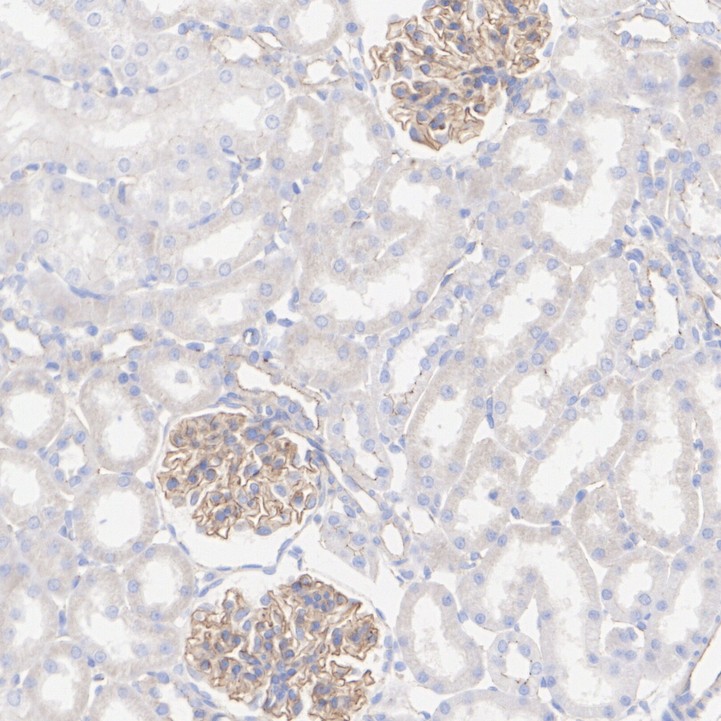ZO1 Rabbit Polyclonal Antibody

cat.: ER41204
| Product Type: | Rabbit polyclonal IgG, primary antibodies |
|---|---|
| Species reactivity: | Human, Mouse, Rat, Cynomolgus monkey |
| Applications: | IF-Cell, IHC-P |
| Clonality: | Polyclonal |
| Form: | Liquid |
| Storage condition: | Shipped at 4℃. Store at +4℃ short term (1-2 weeks). It is recommended to aliquot into single-use upon delivery. Store at -20℃ long term. |
| Storage buffer: | 1*PBS (pH7.4), 0.2% BSA, 40% Glycerol. Preservative: 0.05% Sodium Azide. |
| Concentration: | 1ug/ul |
| Purification: | Immunogen affinity purified. |
| Molecular weight: | Predicted band size: 195 kDa |
| Isotype: | IgG |
| Immunogen: | Recombinant protein within human ZO1 aa 1,401-1,748. |
| Positive control: | MCF7, human kidney tissue, mouse kidney tissue, rat kidney tissue. |
| Subcellular location: | Cell membrane, cell junction, Cell projection, Gap junction, Membrane, Tight junction. |
| Recommended Dilutions:
IF-Cell IHC-P |
1:2,500 1:10,000 |
| Uniprot #: | SwissProt: Q07157 Human | P39447 Mouse Entrez Gene: 292994 Rat |
| Alternative names: | Tight junction protein 1 Tight junction protein ZO-1 Tight junction protein ZO1 TJP1 zo-1 Zo1 ZO1_HUMAN Zona occludens 1 Zona occludens 1 protein Zona occludens protein 1 Zonula occludens 1 protein Zonula occludens protein 1 |
Images

|
Fig1:
Immunocytochemistry analysis of MCF7 cells labeling ZO1 with Rabbit anti-ZO1 antibody (ER41204) at 1/2,500 dilution. Cells were fixed in 4% paraformaldehyde for 20 minutes at room temperature, permeabilized with 0.1% Triton X-100 in PBS for 5 minutes at room temperature, then blocked with 1% BSA in 10% negative goat serum for 1 hour at room temperature. Cells were then incubated with Rabbit anti-ZO1 antibody (ER41204) at 1/2,500 dilution in 1% BSA in PBST overnight at 4 ℃. Goat Anti-Rabbit IgG H&L (iFluor™ 488, HA1121) was used as the secondary antibody at 1/1,000 dilution. PBS instead of the primary antibody was used as the secondary antibody only control. Nuclear DNA was labelled in blue with DAPI. Beta tubulin (M1305-2, red) was stained at 1/100 dilution overnight at +4℃. Goat Anti-Mouse IgG H&L (iFluor™ 594, HA1126) was used as the secondary antibody at 1/1,000 dilution. |

|
Fig2:
Immunohistochemical analysis of paraffin-embedded human kidney tissue with Rabbit anti-ZO1 antibody (ER41204) at 1/10,000 dilution. The section was pre-treated using heat mediated antigen retrieval with Tris-EDTA buffer (pH 9.0) for 20 minutes. The tissues were blocked in 1% BSA for 20 minutes at room temperature, washed with ddH2O and PBS, and then probed with the primary antibody (ER41204) at 1/10,000 dilution for 1 hour at room temperature. The detection was performed using an HRP conjugated compact polymer system. DAB was used as the chromogen. Tissues were counterstained with hematoxylin and mounted with DPX. |

|
Fig3:
Immunohistochemical analysis of paraffin-embedded mouse kidney tissue with Rabbit anti-ZO1 antibody (ER41204) at 1/10,000 dilution. The section was pre-treated using heat mediated antigen retrieval with Tris-EDTA buffer (pH 9.0) for 20 minutes. The tissues were blocked in 1% BSA for 20 minutes at room temperature, washed with ddH2O and PBS, and then probed with the primary antibody (ER41204) at 1/10,000 dilution for 1 hour at room temperature. The detection was performed using an HRP conjugated compact polymer system. DAB was used as the chromogen. Tissues were counterstained with hematoxylin and mounted with DPX. |

|
Fig4:
Immunohistochemical analysis of paraffin-embedded rat kidney tissue with Rabbit anti-ZO1 antibody (ER41204) at 1/10,000 dilution. The section was pre-treated using heat mediated antigen retrieval with Tris-EDTA buffer (pH 9.0) for 20 minutes. The tissues were blocked in 1% BSA for 20 minutes at room temperature, washed with ddH2O and PBS, and then probed with the primary antibody (ER41204) at 1/10,000 dilution for 1 hour at room temperature. The detection was performed using an HRP conjugated compact polymer system. DAB was used as the chromogen. Tissues were counterstained with hematoxylin and mounted with DPX. |
Note: All products are “FOR RESEARCH USE ONLY AND ARE NOT INTENDED FOR DIAGNOSTIC OR THERAPEUTIC USE”.